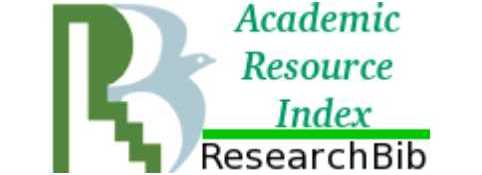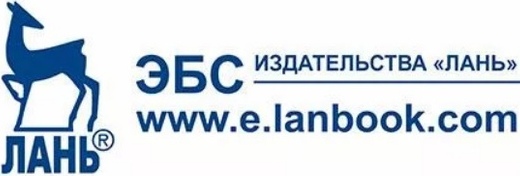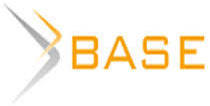Ancient Greek and Roman mythology and the secular moral discourse in the eighteenth-century France (based on graphic arts)
The purpose of this article is to analyze the problem of the reception of Ancient Greek and Roman mythology in the context of the formation of secular moral discourse in Eighteenth-Century France. The study is carried out by combining the methods of visual studies, historical and philosophical analysis. In the 18th century, there was a specific intellectual situation in France which evoked the formation of secular moral discourse as such. In this context, the view of Ancient Greek and Roman mythology also changed. For a long time, moral discourse was associated with religion, and mythological images served as a system of allegories for depicting virtues and vices. In the 17th-18th centuries, the situation changed. On the one hand, in the comments of clerical scholars to the texts of ancient authors a euhemeristic interpretation of the plots came to the fore in accordance with the general “historical” orientation of the worldview of that time. At the same time, the graphic series tried to preserve the previous tradition where Classical mythology served as a designation of virtues and vices. On the other hand, getting into the context of secular moral discourse, where morality is separated from religion, Ancient Greek and Roman mythology also was gradually changing. This process was also objectified in graphic arts, especially in genre scenes – “history of morals in pictures”.

















While nobody left any comments to this publication.
You can be first.
Bayle, P. (1968), Istoricheskiy i kriticheskiy slovar' v dvukh tomakh [Historical and Critical Dictionary in two volumes], vol. 2, Transl. by Boguslavskiy, V.M. and Shern-Borisova, I.S., Mysl', Moscow, Russia (in Russ.).
Caigny, F. (2019), “The Remarks of Marolles in his prose translations of the Aeneid: a modern look at an ancient work?”, Exercices de rhétorique, [Online] available at: http://journals.openedition.org/rhetorique/884 (Accessed 03 August 2022) (in French).
Colette, B. (1983), “’The Costume Monument’ by Rétif de la Bretonne”, Dix-huitième Siècle, 15, 389-306 (in French).
Habermas, Ju. (2017), Strukturnoe izmenenie publichnoy sfery: Issledovaniya otnositel'no kategorii burzhuaznogo obshchestva [The Structural Transformation of the Public Sphere: An Inquiry into a Category of Bourgeois Society], Transl. byIvanov, V.V., “Ves' mir”, Moscow, Russia (in Russ.).
Hausenstein, W. (1914), Iskusstvo rokoko: Frantsuzskie i nemetskie illyustratory vosemnadtsatogo stoletiya [The Art of Rococo: French and German Illustrators of the Eighteenth Century], Sovremennye Problemy Publ., Moscow, Russia (in Russ.).
Heller-Greenman, B. (2002), “Moreau the Younger and the Costume Monument”, Athanor XX, 67-75.
Holbach, P.A. (1963), Sistema prirody, ili O zakonah mira fizicheskogo i mira dukhovnogo [The System of Nature: Or Laws of the Moral and Physical World] in Holbach, P. A. Izbrannye proizvedeniya v dvukh tomakh [Selected essays in two volumes], Vol. 1. Transl. by Yushkevich, P.S., Sotsekgiz Publ., Moscow, Russia, 53-686 (in Russ.).
Kartinki iz zhizni XVIII veka. Rasskazy Retif de-la Bretonna, gravyury Moro-mladshego [Pictures from the life of the 18th century. Stories by Retief de la Bretonne, engravings by the Moreau the Younger] (1913), transl. by Bosse, K., Izdanie Moskovskogo Tovarishchestva, Moscow, Russia (in Russ.).
Le Temple des Muses, orné de LX, où sont représentés les événemens les plus remarquables de l’antiquité fabuleuse; Dessinés & gravés par B. Picart le Romain, & autres habiles Maitres; et accompagnés d’explications et de remarques, Qui découvrent le vrai sens des Fables, & le fondement qu’elles ont dans l’Histoire [The Temple of the Muses, adorned with LX, where are represented the most remarkable events of fabulous antiquity; Drawn & engraved by B. Picart Romain, & other skillful Masters; and accompanied by explanations and remarks, Which discover the true meaning of the Fables, and the foundation they have in History], (1733), Amsterdam, The Netherlands (in French).
Mareshal, S. (1958), Slovar' drevnikh i novykh ateistov [The Dictionary of Ancient and Modern Atheists] in Mareshal, S. Izbrannye ateisticheskie proizvedeniya [Selected atheistic essays], transl. by Sheinman, S.Ya., Izdatel'stvo Akademii nauk USSR, Moscow, Russia, 193-261 (in Russ.).
Monument du costume. Kartiny iz zhizni kontsa XVIII stoletiya [Monument du costume. Pictures from the life of the end of the 18th century] (2020), in Uspenskiy, V. (ed.), Art Volhonka Publ., Moscow, Russia (in Russ.).
Monument du costume physique et moral de la fin du dix-huitième siècle, ou Tableaux de la Vie, Orné de figures dessinées et gravées par M. Moreau le jeune, Dessinateur du Cabinet de S. M. T. C. et par d'autres célebres Artistes [Monument of the Physical and Moral Costume of the End of the Eighteenth Century, or Tables of Life, Decorated with Figures Drawn and Engraved by M. Moreau the Younger, Draftsman of the Cabinet of S. M. T. C. and by other Celebrated Artists], (1789), Paris, France (in French).
Russo, J.-J. (1981), Emil', ili O vospitanii [Emile, or On education] in Russo, J.-J. Pedagogicheskie sochineniya [Pedagogical essays]. Vol. 1. Pedagogika, Moscow, Russia, 19-592 (in Russ.).
Seconde suite d'estampes, pour servir à l'histoire des modes et du costume [The Second suite of prints, to serve in the history of fashions and costume], (1776), Paris, France (in French).
Starobinski, J. (2002), “Mify” i “mifologiya” v XVII – XVIII vekah [“Myths” and “Mythology” in the 17th ‑ 18th Centuries] in Starobinski, J. Poeziya i znanie: Istoriya literatury i kul'tury [Poetry and Knowledge: History of Literature and Culture]. Vol. 1. Transl. by Vasil'eva, E.P., Dubin, B.V., Zenkin, S.N, Mil'china, V.A., Neklyudova, M.S., Smolyarova, T.I. and P.P. Shkarenkov, Yazyki Slavyanskoy Kul'tury Publ., Moscow, Russia, 85-109 (in Russ.).
Suite d'estampes, pour servir à l'histoire des mœurs et du costume [Suite of prints, to serve in the history of manners and costume], (1775), Paris, France (in French).
Tableaux du Temple des Muses: Tirez du Cabinet de Feu Mr. Favereau, Conseiller du Roy en Sa Cour de Aydes, Et Gravez en Tailles-Douces par les Meilleurs Maistres de Son Temps, pour Representer les Vertus Et les Vices, sur les Plus Illustres Fables de l'Antiquité. [Paintings from the Temple of the Muses: Taken from the Cabinet of the Fire Mr. Favereau, Advisor to the King in His Court of Aydes, And Engraven in etchings by the Best Masters of His Time, to Represent the Virtues and Vices, on the Most Illustrious Fables of Antiquity], (1655), Paris, France (in French).
Taylor, Ch. (2017), Sekulyarnyy vek [A secular age], transl. byVasilyev, A., Kolkner, L. and Lukianov, A., BBI Publ., Moscow, Russia (in Russ.).
Voltaire, F. (1988), Filosofskiy slovar' [Philosophical Dictionary] in Voltaire. Filosofskie sochineniya [Philosophical Essays], transl. by Sheinman-Topshein, S. Ya., Nauka Publ., Moscow, Russia, 620-716 (in Russ.).